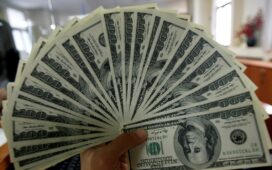What’s going on here?
The US dollar hit a three-week low ahead of the release of US payrolls data, adding to the growing signs of a cooling economy.
What does this mean?
The dollar index dropped 0.2% to 105, setting it up for a 0.8% weekly decline. Investors have their eyes on the non-farm payrolls report, expected to show a 190,000 job increase for June, down from 272,000 in May. Economic signals hinting at a slowdown are fueling hopes that the Federal Reserve might soon cut interest rates. Analysts from Mitsubishi UFJ Financial Group forecast a rate cut by September if payrolls drop below 150,000, suggesting softer labor demand. On the geopolitical front, President Biden faces rising Democratic pressure to step aside before the November election, while the UK Labour party’s landslide win has boosted the pound and British stocks.
Why should I care?
For markets: Currencies and political winds.
Sterling gained 0.2% to $1.2786, eyeing a 1.1% weekly gain post-UK elections. The euro showed resilience against French political pressures, with a 1% weekly rise. The dollar slid 0.3% against the yen to 160.83, bouncing back from a 38-year low. Japan’s Finance Minister emphasized urgent market monitoring, hinting at possible intervention to support the yen, which has declined over 12% against the dollar this year.
Zooming out: Global economic sentiments.
Geopolitical and economic shifts are mapping trends across global currencies. The Labour party’s UK win and US economic cooling contribute to these dynamics. Mt. Gox’s anticipated token release impacted cryptocurrencies, dragging bitcoin down 5% to just over $55,000. Investors should keep an eye on how these multifaceted factors shape future market narratives.





